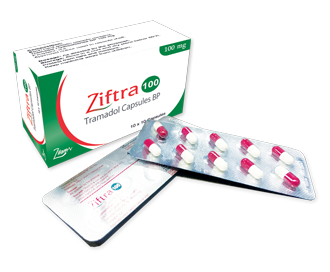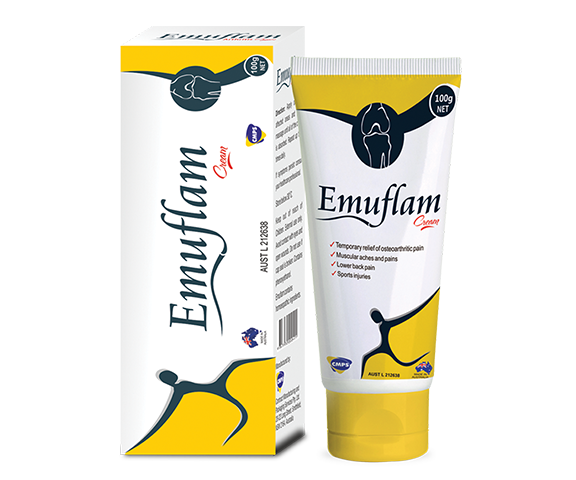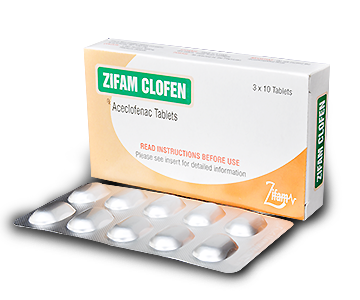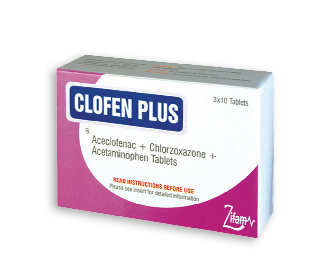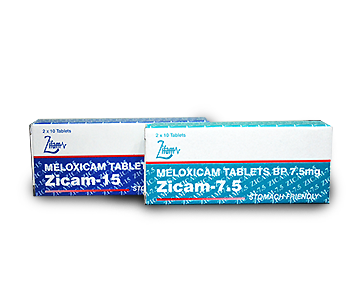Clofen Gel
- ENG
- မြန်မာ
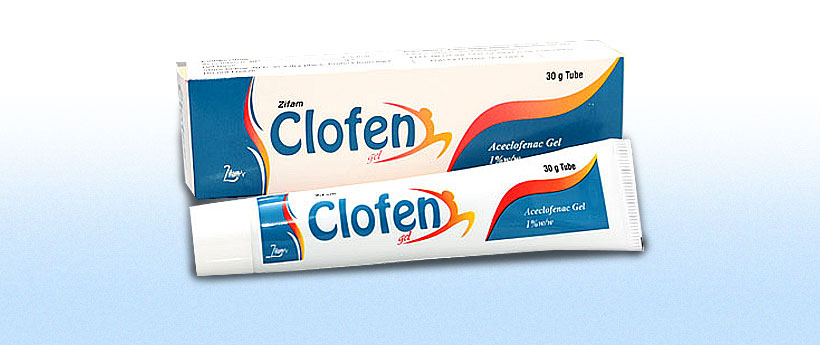
Aceclofenac BP …………………….. 1%w/w
Gel Base……………………………….. q.s.
Description:
Aceclofenac is a non-steroidal agent with marked anti-inflammatory and analgesic properties. Aceclofenac has higher anti- inflammatory action than conventional NSAIDs. It is a cytokine inhibitor.
Indications:
Zifam Clofen Gel is indicated for the relief of pain and inflammation in osteoarthritis, rheumatoid arthritis, ankylosing spondylitis, acute gout, post-operative pain, painful muscle-skeletal conditions and low back pain.
Contraindications:
- Patients with or without chronic asthma in whom attacks of asthma, urticaria or acute rhinitis are precipitated by aspirin or other non-steroidal anti- inflammatory agents.
- Hypersensitivity to aceclofenac, acetylsalicylic acid or other non-steroidal anti-inflammatory drugs.
- Hypersensitivity to any other ingredient of the gel.
- Concomitant use of other products containing aceclofenac.
- Concomitant use of oral NSAIDS.
- The use in children and adolescents aged less than 14 years is contraindicated.
Precautions:
Zifam Clofen Gel should be applied only to intact, non-diseased skin and not to skin wounds or open injuries. It should not be used with occlusion. It should not be allowed to come into contact with the eyes or mucous membranes, and should never be taken by mouth.
Patients with a history of or active, peptic ulceration, some possibility of gastro-intestinal bleeding in those with a significant history of this condition has been reported in isolated cases.
Like other drugs that inhibit prostaglandin synthetase activity, aceclofenac and other NSAIDs can precipitate bronchospasm if administered to patients suffering from or with a previous history of asthma or allergic disease. Discontinue if rash develops.
Warnings:
The likelihood of systemic side effects with topical aceclofenac is small compared to the frequency of side effects in patients using oral aceclofenac.
Zifam Clofen Gel contains propylene glycol, which may cause mild, localised skin irritation in some people.
Interactions:
Systemic absorption of Zifam Clofen Gel is low and hence the risk of an interaction is small.
Concurrent use of aspirin of other NSADIs may result in an increased incidence of adverse reactions.
Pregnancy & Lactation:
Since no experience has been acquired with Aceclofenac Gel in pregnancy or lactation, it is not recommended for use in these circumstances.
Side Effects:
Zifam Clofen Gel is usually well tolerated. Local irritation, erythema, pruritus or dermatitis may occasionally occur. Skin photosensitivity, desquamation, discoloration and bullous or vesicular eruptions have been reported in isolated cases. Patients should be warned against excessive exposure to sunlight in order to reduce the incidence of photosensitivity.
Dosage & Administration:
Adults : Zifam Clofen Gel should be rubbed gently into the skin. Depending on the size of the affected site to be treated 2-4 g (a circular shaped mass approximately 2.0-2.5 cm in diameter) should be applied 3-4 times daily. The maximum daily dose is 16g. Therefore the maximum weekly dose is 112g. A period of at least 4 hours should be left between applications. The dose should not be applied more than 4 times in a 24 hour period. After application, the hands should be washed unless they are the the site being treated. Do not use for more than 14 days unless recommended by the Physician.
Children and adolescents: There are insufficient data on efficacy and safety available for the children and adolescents below 14 years of age. In children aged 14 years and over, if this product is required for more than 7 days for pain relief or if the symptoms worsen the patient/parents of the adolescent is/are advised to consult a Physician.
Overdosage:
Symptoms The low systemic absorption of topical aceclofenac renders overdosage extremely unlikely. In the event of accidental ingestion, resulting in significant systemic side-effects, general therapeutic measures normally adopted to treat poisoning with non-steroidal anti-anflammatory drugs should be used.
Treatment: within one hour of ingestion of a potentially toxic amount, activated charcoal should be considered. Alternatively, in adults, gastric lavage should be considered within one hour of ingestion of a potentially life-threatening overdose. Good urine output should be ensured.
Storage: Store below 30˚ C, in a dry place. Protect from Light.
Do not Freeze.
Keep medicine out of reach of children.
Presentation:
30g tube.






